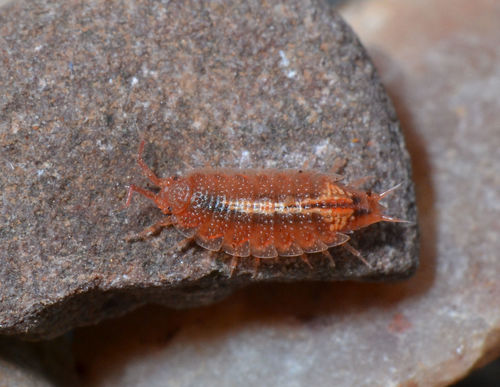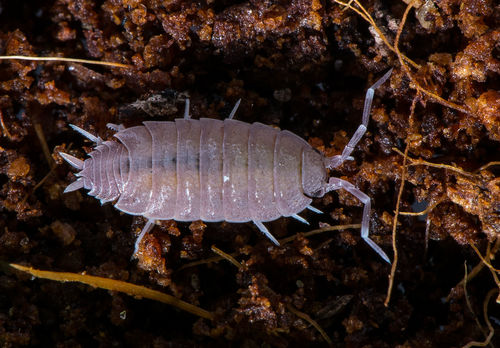Two synanthropic Isopods overlooked in Worcestershire
Gary Farmer
Two distinctive woodlice which appear to be strongly synanthropic in Worcestershire are worth looking for in gardens.
Androniscus dentiger Verhoeff, 1908. (01)This is perhaps our most distinctive species being brightly coloured orange or salmon-pink. It is fairly small measuring up to 6mm, fast moving and strongly heliophobic; disappearing quickly when disturbed. This species needs damp conditions and I have only ever found it in deep gravel, under regularly watered plant pots and deep down in the footings of buildings. I am sure it is overlooked in the county because of its choice of habitat so it is worth looking in appropriate places in any garden in limestone areas or close to buildings where lime has leached from mortar or concrete, although I appreciate that not everyone will want to dig out footings just to look for woodlice.
Porcellionides pruinosus (Brandt, 1833). (02). Another distinctive species with long antennae and a fairly narrow body. Porcellionides pruinosus is another fast moving woodlouse with long pale legs which can contrast strongly with the brown/purple body. This is a medium sized species growing up to 12mm but its most distinctive feature is that it often has a bluish powdery bloom. I have only ever seen P. pruinosus in compost bins. Steve Gregory (2009) notes that the species is readily moved around in farmyard manure. So another one to check for in your own gardens, farms and stables.
Reference
Gregory, S. 2009. Woodlice and Waterlice (Isopoda: Oniscidea and Asellota) in Britain and Ireland. NERC Centre for Ecology and Hydrology, Oxfordshire.
Images
01. Androniscus dentiger. Gary Farmer
02. Porcellionides pruinosus. Gary Farmer

